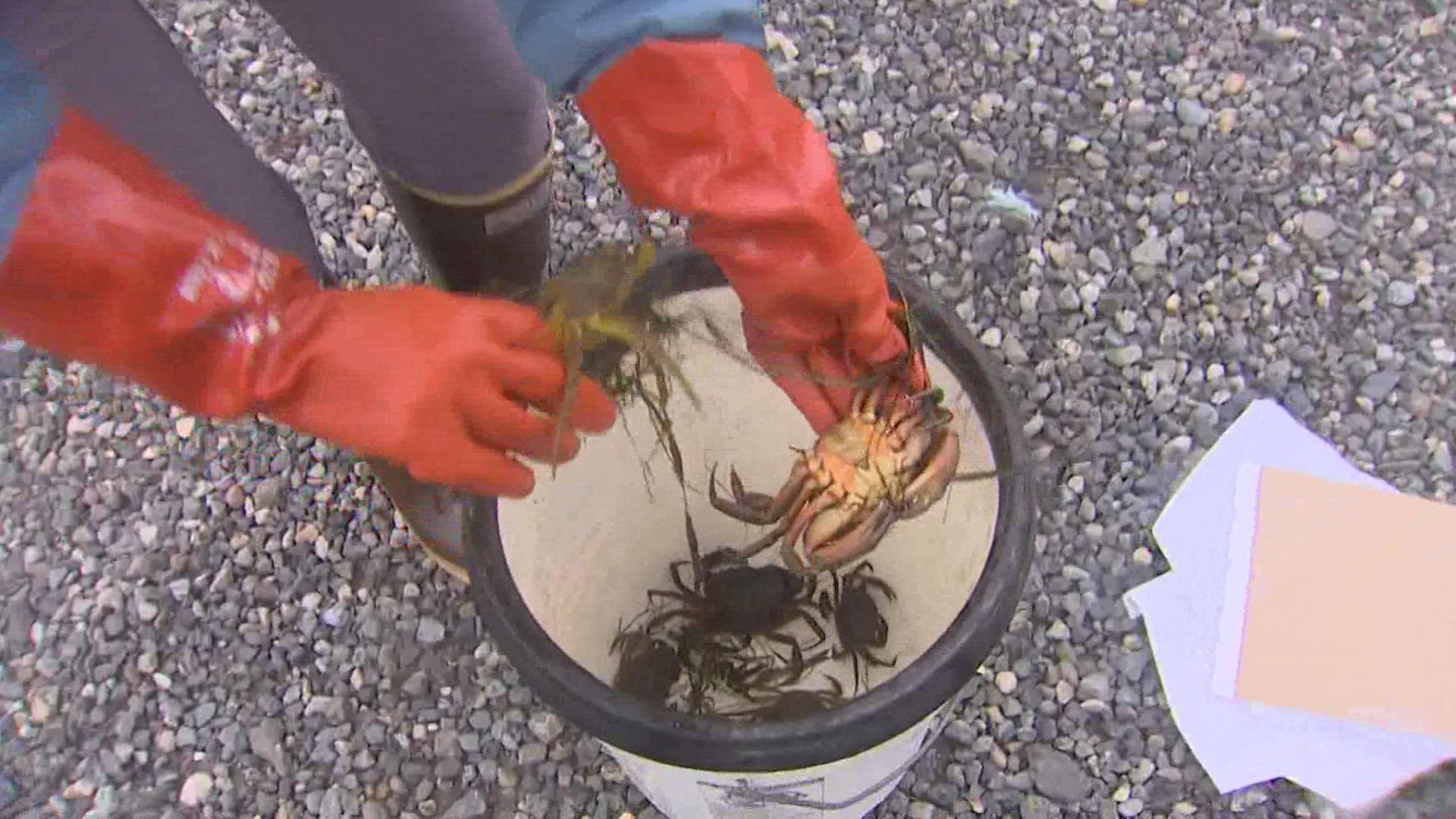BELLINGHAM, Wash. — The Lummi Indian Business Council passed a resolution declaring a disaster after more than 70,000 European green crabs were captured and removed from the Lummi Sea Pond in recent months. The disaster was declared on Nov. 23.
The Tribe cultivates shellfish and juvenile salmon in the 750-acre sea pond surrounded by the most productive natural shellfish beds on the reservation.
The crabs, which are an invasive species, threaten hatchery operations, Tribal shellfish harvests and may have larger impacts if the infestation spreads.
According to the Washington State Department of Fish and Wildlife (WDFW), green crabs can prey upon young oysters, dig down to find clams to eat and can eat other crabs their own size. The department said one green crab can consume 40 half-inch clams a day.
Lummi Nation Chairman William Jones Jr. said the appearance of the European green crab is a serious threat to their treaty fishing rights.
On Wednesday, Jones and a crew from the National Resources Department checked traps and found far more crabs then they'd hope to see. Bobbie Buzzell, a fisheries biologist with the Lummi Natural Resource Department (LNRD), said they didn't need to bait the traps.
"Their population has just exploded," Buzzell said. "We're mainly concerned about removal and trying to prevent escapement from the pond, so the more we catch in here the better."
LNRD Deputy Director Frank Louis Lawrence Jr. said this is one in a string of invasive species the Lummi Nation has grappled with, but the work is essential to sustaining future generations.
"We are a water people, we are salmon people, we have to think of everything we do as for our children and our grandchildren to come," Lawrence Jr. said.
Jones Jr. said protecting the water and native species is critical.
"One of the reasons we're here is because of the food source that is available- the Dungeness crabs, and the clams and the oysters," Jones Jr. said. "Everything about the sea right here is where our people came from and it's the way we make our living, it's the way we grew up, protecting it. So that's why the Green Crab is such a threat to us."
The Lummi Indian Business Council hopes the declaration it passed will help raise awareness of the need for resources to get this population under control.
"We're taking it really seriously to address it and take care of it," Jones Jr. said. "We're looking for government resources to help combat it; we're looking for state and government resources to help with management of the crab, keeping it under a certain amount, so they don't overtake our native populations in Lummi Bay.
"Just bringing awareness to our situation; sitting down at the table to take care of the logistics, with state and local governments."
The invasive crabs were first discovered on Lummi Reservation tidelands in fall 2019. The Tribe said tens were captured in 2019, and hundreds were captured in 2020.
The Tribe hired additional staff in 2021 to help trap the crabs. A majority of the 70,000 crabs removed from the sea pond this year were captured between September and October.
In a video posted to Facebook, the Tribe said invasive European green crabs are commonly confused with native crab species like hairy shore crabs, hairy helmet crabs or juvenile Dungeness crabs.
The crabs can vary in color from reddish to a dark mottled green. The WDFW said the crab's most distinctive feature is the five spines or teeth on each side of its shell. There are three rounded lobes between the crab’s eyes and its last pair of legs are “somewhat flattened.” The department said the shell on the back of the crab is broader than it is long and rarely exceeds 3.5-4 inches across.


Anyone who believes they have found an invasive crab on Lummi tidelands is asked to contact a Tribe green crab biologist to report the sighting. Sightings can be reported by emailing BobbieB@lummi-nsn.gov or by calling 360-380-8672.

